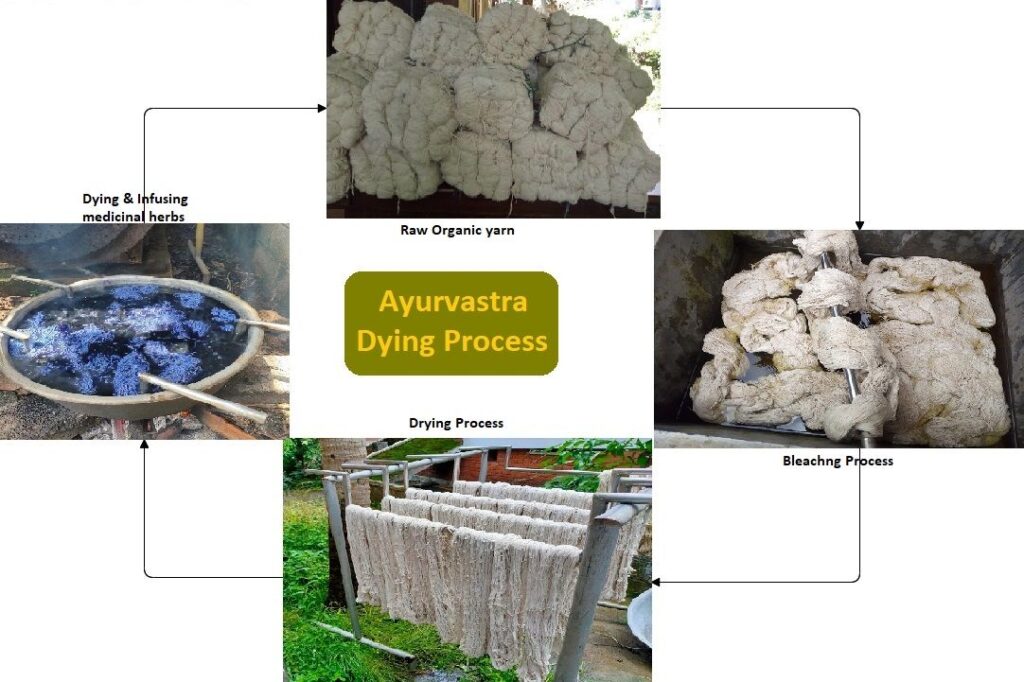Ayurvedic Dyeing process
Gumming
It is a pre-bleaching process which involves washing of the processed gray cloth with mineral-rich water and sea salt to remove sizing, gums, and oils used in the weaving
Bleaching
The selected fabric or yarn is bleached with a preparation based out of cow urine which is a basic constituent of an individual’s physiology and psychology. Moreover, it strengthens the immune systems and as an elixir in giving life. The yarn is then exposed to direct sunlight as a part of the process.
Mordanting
To make the colors look bright and retain color fastness, natural mordants such as myroballans, rubhabs leaves, oils, alum, fruit extracts of haritaki, bark of lodhra, minerals, and iron are used. Use of heavy metallic mordants such as copper, chrome, zinc, and tin is avoided as they are not ecofriendly. Mordanting is done before dyeing the fabric or yarn to make the colors look bright and retain fastness.
Medicating(Dying)
The organic cotton yarn/fabric is dyed carefully with concoction of herbal dyes indicated for the treatment of desired disease(s). The herbal dyes are prepared by careful blending of medicinal herbs derived from plants, flowers, roots, and barks called kashaya. Finally, the medicated cloth is cooled and washed several times to remove the non absorbed particles and always dried in shade. The fabric is then left to dry for 3 days after drying in a shade and then kept a dark room for 15 days known as “seasoning,” a period of time that allows the fabric to dry completely and the Kashaya to settle in to the fabric.
Finishing
Finishing is done by sprinkling pure water on the cloth and then stretching under pressure, using hand rolls, aloe vera, castor oil etc
Recycling residue
After dyeing, residue can be recycled. Solid and liquid wastes are separated by the filtration and used for farming purposes—as bio manure and for watering the fields and also to generate the biogas.
